Emergency Response Plan for Wastewater Systems in First Nations Communities
PDF Version (61 Kb, 28 Pages)
Word Version of Templates (154 Kb, 8 Pages)
Guide and Template
For information regarding reproduction rights, please contact Public Works and Government Services Canada at: 613-996-6886 or at: droitdauteur.copyright@tpsgc-pwgsc.gc.ca.
1-800-567-9604
TTY only 1-866-553-0554
QS-6337-050-EE-A1
Catalogue: R3-204/2014E-PDF
ISBN: 978-1-100-23122-8
© Her Majesty the Queen in right of Canada, represented by the Minister of Aboriginal Affairs and Northern Development, 2014
Foreword
The Protocol for Centralized Wastewater Systems in First Nations Communities requires First Nations communities to have emergency response plans in place for their systems. The goal of this document is to provide communities with user-friendly and informative guidance to assist them in developing their own community-based emergency response plan (ERP).
In its broader sense, an emergency is any present or imminent event that requires prompt coordination of actions to protect the health and safety of people, or to limit damage to property or the environment. First Nations communities have a responsibility to develop, implement and maintain local Emergency Management Plans (EMP) that encompass a wide range of emergencies and responses including floods, fires, severe weather, power outages and failure of community infrastructure. This document focuses on emergency response planning aspects that relate to wastewater systems on reserve. The resulting ERP should eventually form part of a broader EMP for the community.
This Guide was developed for the most part by the British Columbia Region of Aboriginal Affairs and Northern Development Canada (AANDC). The Engineering and Technical Services team at Headquarters in Gatineau adapted the document to make it applicable in all regions.
Quality information and a well-designed Emergency Response Plan are critical for a timely response to emergency situations. We hope that this Guide and the templates provided in the appendices will help First Nations achieve this goal.
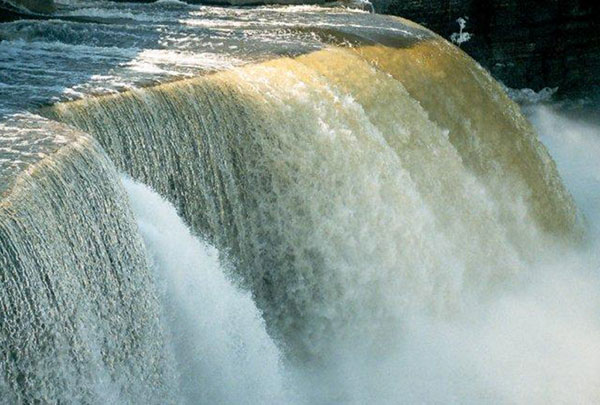
Table of contents
- 1. Introduction
- 2. Why do you need an Emergency Response Plan for your wastewater system?
- 3. What should your ERP include?
- 4. Examples of potential emergency situations and possible responses
- 5. How to get the message out to the community
- Appendices
- Appendix A. Emergency Response Plan | Contacts List Template
- Appendix B. Emergency Response Plan | Actions Lists Template
- Appendix C. Emergency Response Activity Record and Reporting Template
- Appendix D. Notification of release or environmental emergency
- Appendix E. Material for Informing System Users/Community Members
1. Introduction
Raw or improperly treated sewage carries a dangerous cocktail of infectious bacteria, viruses, parasites and toxic chemicals. When it ends up in our drinking water, recreational water or in basements of our homes, it poses a significant threat to human health and the environment. Human contact with raw or improperly treated sewage can lead to serious health problems, including cholera, dysentery, infectious hepatitis, giardiasis, gastroenteritis, etc. If released to fish-bearing waters, toxic substances in the raw sewage can also cause illness in fish and kill aquatic life.
Community sewage (wastewater) systems are designed to protect public health and the environment. Sewage is collected and conveyed to a treatment system where pollutants are reduced prior to discharge. When these systems (both collection and treatment) work as designed, there is reduced risk to public health or the environment. However, during emergencies, there can be increased risks. Preparing an emergency response plan (ERP) and practising it can save lives, prevent illness, enhance system security, minimize property damage and environmental impact, and lessen liability. An effective ERP includes planning for any and all possible emergency scenarios, communicating with system users and health and environmental authorities, and acting to stop, contain and minimize the effects of the spill.
The purpose of this Guide is to assist First Nations administrators and wastewater systems operators develop their own ERP, which in turn may help minimize the potentially damaging effects of sewage spills on public health and the environment. The Guide provides examples of the most common types and levels of emergencies and provides examples of specific responses to those emergencies. It prompts operators to develop a list of people and agencies they may need to contact in case of emergency. The Guide focuses on preventing or minimizing short-term and immediate effects on public health and the environment associated with sewage spills. It is intended to supplement, rather than duplicate any existing community-specific ERPs or overarching Emergency Management Plans (EMP).
What is a Sewage Spill?
A sewage spill means the release or discharge of raw sewage or improperly treated sewage effluent into the environment in an amount that can cause pollution. It is usually associated with an out-of-the-ordinary event and not part of the day-to-day operations of a wastewater collection or treatment operation.
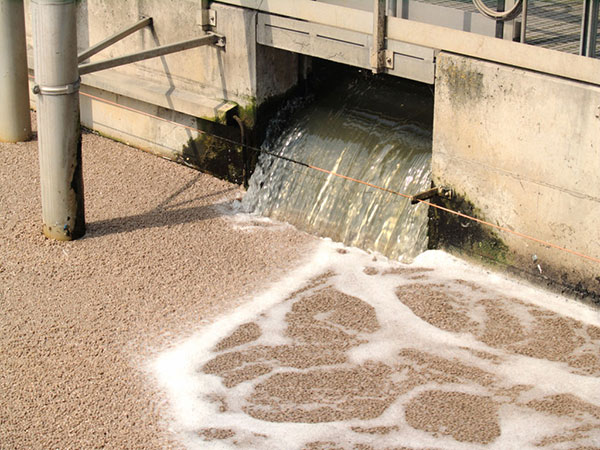
2. Why do you need an Emergency Response Plan for your wastewater system?
An Emergency Response Plan (ERP) is a document that provides a step-by-step response to, and recovery from, incidents related to situations of emergency. The ability of wastewater utility staff to respond rapidly in an emergency will help prevent unnecessary complications and protect consumers' health and safety. It may also help prevent significant financial losses resulting from damaged system components that may arise from emergency situations or events.
Emergency response planning is a process by which wastewater system managers, operators and employees explore vulnerabilities, make improvements and establish procedures to follow in case of an emergency. It is also a process that encourages people to form partnerships and get to know one another. Preparing an emergency response plan and practising it can save lives, prevent illness, enhance system security, minimize property damage and lessen liability.
As an operator of a community wastewater system, you can benefit from an ERP, as it helps you to ensure the safety and health of the people in your community, and to protect the environment. The federal Fisheries Act prohibits the deposit of deleterious substances into fish-bearing waters. In particular, the Wastewater Systems Effluent Regulations, as well as many provincial regulations prohibit the release of wastewater into the environment without meeting effluent quality standards. In addition, the Release and Environmental Emergency Notification Regulations require that the release of a substance, or the likelihood of a release, or the occurrence of an environmental emergency, be identified to the appropriate authority. An ERP can aid in ensuring that the deposit of deleterious substances does not occur and can also help to ensure that your wastewater system continues to operate in compliance with applicable regulatory requirements.
A properly prepared, well-thought out ERP will tell you exactly what to do and whom to contact so that a response can be rapid and effective. The ability to respond in such a way will help prevent unnecessary problems and will protect the health and safety of the community you are serving as well as the receiving environment within and around your community. An ERP may also save money to facility owners by minimizing further complications.
Action — Not Reaction
When a wastewater emergency situation does occur, you should immediately start taking the necessary actions to resolve it, not stand around wondering what you should do first or next. In order to be prepared, you have to be familiar with your community wastewater systems and be able to foresee various types of potential problems and causes that could lead to spills. Then you should identify solutions to each of those problems that could prevent or minimize the spills. Conditions that require public notification, requests for assistance and other possible concerns should all be identified in advance. The act of preparing a response to a potential wastewater emergency may actually help you prevent one from happening. By identifying and implementing mitigation measures you may be able to prevent or minimize the effects of an emergency. Mitigation measures should be part of your ERP and are discussed in more detail in Section 3.
The next sections of this Guide provide several examples of situations requiring an emergency response as well as recommendations for appropriate actions to be taken under such circumstances. The list is by no means exhaustive and you may be able to identify some other types of situations. This document should be used as a guideline for outlining your own community-specific ERP.

3. What should your ERP include?
List of Contacts
At a minimum, your ERP should include a list of contact people and phone numbers for trouble shooting, servicing and assistance. This includes operators, repair people, government agencies, media representatives and community members. You should complete an ERP Contact List as shown in Appendix A of this Guide and post it on the wall of your office.
Your ERP should be organized into several logical sections so that information is easy to find. The following are some key elements that should be included in your ERP.
Introduction
The introduction of your ERP should explain its purpose, goals, and overall organization, and should describe the roles and responsibilities of community members involved, including the drinking water system operator(s). Stating a mission and goals for emergency response is an important first step because it helps focus on the important aspects of the plan. The mission statement should reflect the duty to provide proper wastewater treatment and disposal and to protect public health, the environment, infrastructure and property. The goals for your ERP should include:
- Assess the type and severity of the emergency
- Notify key contacts and authorities
- Take appropriate and timely emergency response actions
- Take action to minimize system damage
- Return the system to normal operation
Defining clear roles and responsibilities for system operators and other personnel during an emergency speeds up response time and helps eliminate confusion. System personnel needs to know who to report the emergency to, who is responsible for overall management of the emergency, who has decision-making authority and what their own responsibilities are. Large systems may have a variety of persons involved on-site, whereas small systems may only have one person, usually the wastewater system operator.
System Information
- Describe the sewage collection, treatment and disposal system as well as built-in redundancy features of the system.
- Describe equipment standard operating procedures.
- Describe procedures for connecting to portable pumps, switching to alternate power supplies and/or maintaining generators, including schematics of electrical systems in lift stations and wastewater treatment plants. They should be located beside the equipment they refer to.
- Storage location of tools and maintenance equipment.
- Storage location of your O&M Manual.
- Provide a map of your community that shows the location of the items such as the ones below to help in the fastest possible response:
- wastewater collection sewers;
- critical control points (e.g., lift stations, shut-off valves, manholes, cleanouts, overflow storage or bypassing facilities);
- access routes, roads or trails to these critical control points;
- wastewater treatment plant;
- effluent disposal systems (i.e., ground disposal fields, outfalls, etc);
- all built-in redundancy features of the facility;
- high volume sewage discharge businesses if any;
- drinking water distribution lines;
- drinking water sources (wells, surface water intakes) and pump houses; and
- other high-risk downstream receptors such as residents, schools, hospitals, daycare centers, long term care facilities, wells in unconfined aquifer or influenced by surface water, shellfish beds, recreational beaches and fish-bearing waters.
Mitigation Measures
System components identified in the previous section can become less susceptible to encounter problematic situations, which in turn may cause harm, if proper mitigation measures are in place. Mitigation measures refer to actions taken to eliminate or reduce the harmful effects of wastewater systems emergencies. By making a thorough evaluation of all the potential "trouble spots" or vulnerable points in your own system, you may identify steps you can take now that will prevent an emergency from happening later. The following items provide a guide to mitigation measures. Describe in your ERP all features that apply to your wastewater utility.
Mitigation of wastewater collection system failures consists of:
- cleaning sewer lines on a regular basis to remove grease, grit, and other debris that may lead to sewer backups;
- ensuring that groundwater and storm-water runoff infiltration and inflow are minimized ─ rain water entering the sewer pipe causes overflows;
- inspecting and maintaining manholes, sewer intakes and sewer lines for structural integrity;
- regular valve-testing—check locations of valve boxes to ensure that they have not been paved over;
- installing backup lift station at critical system control point, or installing a portable generator to provide protection against spills;
- providing storage to contain flow during a limited power outage; and
- educating system users about behaviors that can cause sanitary sewer blockage/overflows ─typical solids that buildup in the pipe and cause backups are grease, dirt, bones, tampons, paper towels, diapers, broken dishware, and garbage.
Mitigation of wastewater treatment process failures consists of:
- having power back-up sources and ensuring availability of fuel;
- getting trained on how to run utility systems manually when automated systems fail;
- having repair kits, spare parts, portable pump, etc.
Mitigation of impacts from spills consists of:
- determining the best methodology and location to bypass overflows due to equipment malfunction and/or power outages;
- arranging for alternate/emergency outfall; and
- having spill cleanup materials readily available and in a known location.
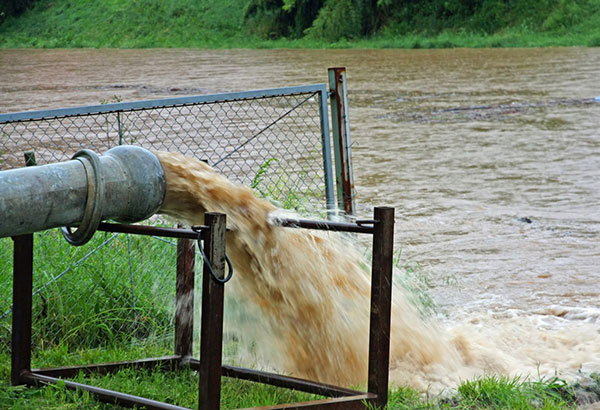
Potential Emergency Situations
When preparing your ERP, you should try to identify all situations which could have a negative impact on human health/safety or the environment. Some of the causes of spills and other malfunctions that you should identify include:
- Wastewater spill / broken sewer main
- Blocked sewer main
- Malfunctioning of wastewater treatment plant
- Pump/siphon failure
- Electrical control malfunctioning
- Power failure
- Malfunctioning of wastewater disposal facilities (i.e. ground disposal fields, outfalls)
- Flooding of wastewater treatment or disposal facilities
- Earthquakes damaging the system
- Snow/wind storm
- Fire
- Act of vandalism, terrorism or sabotage causing system disruption
The O&M Manual and standard operating procedures for your system may list typical system malfunctions and related emergency situations, methods to prevent them, and actions required when they occur. This information comes in handy when developing an ERP.
The potential impact caused by the above emergency situations can be ranked into three levels: minor, significant and major emergencies.
Section 4 provides some examples of potential emergency situations and possible responses, based on either causes or impact levels. Once you have identified all possible emergency situations and response actions for your system, you should record this information in ERP Action Lists as shown in Appendix B of this Guide.
Communication Plan
Communication plays a key role in how well you are able to respond during an emergency. You must be able to alert all the receptors of the spill from your system as soon as possible, especially if there is a possible risk to their health from contact with sewage. Section 5 provides more guidance on developing a simple and efficient emergency response communication plan.
Equipment Operation
Standard operating procedures for switching to alternate power supplies and/or maintaining generators, including schematics of electrical systems in pump houses, may also form part of your ERP, and should be located beside the equipment they refer to.
ERP Update and Training
Describe the ERP review and update process, evaluate the effectiveness of the ERP and provide information on the wastewater system's ERP training program. You need to update relevant components of the ERP when new wastewater facilities are added or the existing system is altered. You must update your emergency contact list once per year or whenever your contact information changes, whichever comes first. As an operator, you need to make yourself familiar with the emergency response plan when starting the job and when the ERP is updated. It is also important to practise your ERP. A wastewater emergency response drill (or mock emergency) is recommended once per year.
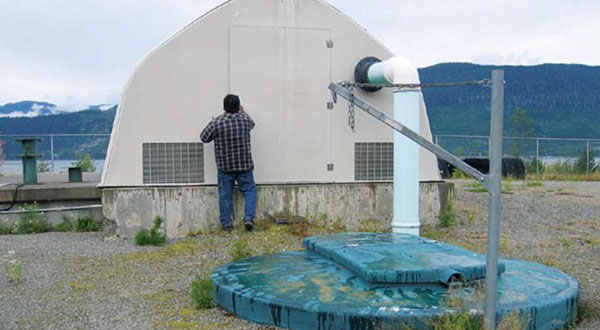
4. Examples of potential emergency situations and possible responses
The following subsections describe some examples of potential emergency situations and possible responses. These are categorized as "responses based on causes," which outline responses to common causes of emergencies in wastewater systems, and "responses based on levels of impact," which outline responses to be taken depending on the consequences.
Please note that these examples may or may not apply to your particular wastewater system. The type of response, the contact list and the order of response will also vary with the size of your system, quantity, quality and location of spills, sensitivity of the receiving environment, and other factors.
If, as a community wastewater systems operator, you believe the spill is not the responsibility of the Band, inform the residents responsible for the spill of what to do and who to call for help. Provide a small works roster to the residents to use for contacting contractors.
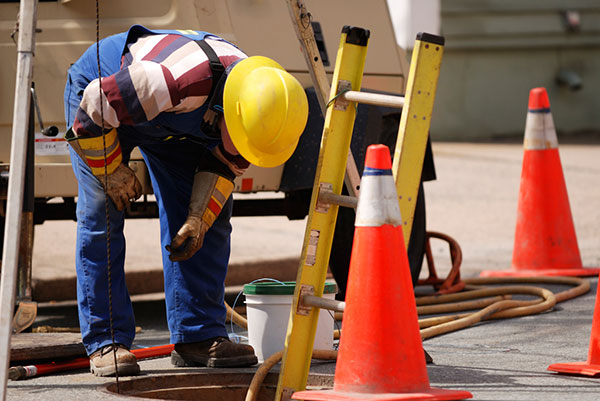
4.1 Responses based on causes
Wastewater spill / Broken sewer main
- Notify the Chief and Council.
- Call for repair service and/or equipment supplier.
- Estimate the quantity of sewage spilled.
- Determine the level of emergency as indicated in Section 4.2, and take further actions accordingly.
- Notify Environment Canada if a spill has occurred to a water body. Contact Environment Canada for specific instructions.
- Contain the spill as much as possible.
- Broken sewer main: if possible, isolate the sewer line to stop, contain or minimize the spill, or divert the spill to low-risk areas.
- Arrange alternate sewage disposal if necessary, i.e., divert the spill into downstream manhole if possible, pump and haul, emergency storage, etc.
Malfunctioning wastewater treatment plant
- Notify the Chief and Council.
- If possible, locate the system components that are malfunctioning.
- Repair minor problems if you can.
- Call for repair service and/or order replacement parts.
- Monitor the performance of the wastewater treatment plant.
- Take effluent quality samples once per week while parts are malfunctioning.
- Determine the impact of the malfunctioning. Determine the level of emergency as indicated in Section 4.2, and take further actions accordingly.
Pump/siphon failure
- Notify the Chief and Council.
- Repair minor problems if you can.
- Replace with spare pump or hook up to a portable pump if one is available.
- Call for repair service and/or equipment supplier.
- In the event of a spill, follow the Wastewater Spill procedure above.
- Determine the level of emergency as indicated in Section 4.2, and take further actions accordingly.
Electrical control malfunctioning
- Notify the Chief and Council.
- Repair minor problems if you can.
- Call for repair service and/or order replacement parts.
- In the event of a spill, follow the Wastewater Spill procedure above.
- Determine the level of emergency as indicated in Section 4.2, and take further actions accordingly.
Power failure
- Notify the Chief and Council.
- Call hydro/power supplier.
- Start back-up generator. Check frequently if the generator works well.
- Notify all users of interruption of service if the back-up power supply is not capable of carrying away the flow.
- In the event of a spill, follow the Wastewater Spill procedure above.
- Determine the level of emergency as indicated in Section 4.2, and take further actions accordingly.
Malfunctioning wastewater disposal facilities (ground disposal fields, outfalls)
- Notify the Chief and Council.
- If possible, locate the areas that are malfunctioning.
- Call for repair service and/or order replacement parts.
- Determine the impact of the malfunctioning and level of emergency.
- Take further actions and make contact as indicated in Section 4.2, based on the level of emergency.
Flooding, Earthquake, Snow/windstorm, Fire, Act of vandalism or Terrorism
- Notify the Chief and Council.
- Call fire fighters for fire, RCMP for vandalism.
- Advise all sewer users to reduce their washing and flushing activities if sewer spill has occurred or is imminent.
- Take further actions and make contact as indicated in Section 4.2, based on the level of emergency.
- Work together with Band Chief and Council and maintenance personnel for collaborated and coordinated response.
- Contact media and use phone trees for public notification.
4.2 Responses based on impact levels of emergency
| Impact Level | What it Means | Actions | Personnel/Agency to Notify |
|---|---|---|---|
| Level 1: Minor Emergency |
|
|
|
| Level 2: Significant Emergency |
|
|
|
| Level 3: Major Emergency |
|
|
|
5. How to get the message out to the community
Communications play a key role in how well you are able to respond during an emergency. Your particular communications plan depends more than anything else on the level of emergency situation. Here are a few methods to illustrate how to get the message out to the community.
Public notices
A simple flyer/note to the affected people is an effective way to ensure that they are aware of the current situation regarding the sewage spill. The key is to make sure that everyone gets the message that an emergency has occurred and that the area is no longer safe for normal use. Some possible suggestions for the flyer/note include:
- Use bright paper to ensure that it is visible, especially for older community members (and always use the same color paper for a wastewater issue).
- Use readable, larger fonts so that the message can be read by everybody.
- Post or tape the flyer to each house; don't simply place it in a mailbox or through the mail slot, where it has the chance to be missed.
- Use the radio/telecommunications system if one is available in the community.
Phone trees/e-mail lists and web-based social networks
In the case of small or medium-sized communities, your communications plan may include organizing a "phone tree." This is a pre-arranged plan which allows every household in the community to be contacted by telephone with an important message from their neighbours. People who have been phoned have their own list of other people to phone, who in turn have the names of others to phone, and so on down the line until everyone on the system has been alerted.
Many small communities already have some kind of "phone tree" or e-mail list, etc., system in place so they can respond quickly to other emergencies, such as alerting local volunteer fire fighters. Talk to your local fire chief; you may be able to use the same system for an emergency involving your wastewater system. If your community has developed a broader EMP, use the pre-defined lines of communication. If you use a phone tree, it is very important to keep it up to date. Use and make the most of existing communication channels as much as possible, including chat rooms, Facebook, Twitter, etc. When using e-mail or other written communication, have a distribution list prepared in advance and have pre-written notification messages.
A "phone tree" probably isn't necessary for very small wastewater systems with only one/two or a dozen connections all located near each other. In these cases, assuming that you as the wastewater operator are already at the scene, you can pass the word around just by knocking on a few doors and getting others to pass the word around as well so that all the users are made aware of the problem right away. If you are using a "phone tree" to send out a message to your community members telling them not to use the sewer system (e.g., flushing toilets, doing laundry) during the spill, make sure that people who either don't have phone lines or e-mail, or who aren't in when the call is made also get the message.
Media
Local media such as radio, television and newspapers can also carry warnings to the community members if the situation is serious enough. Make sure you contact local media as part of your emergency planning to establish your credibility with them and to ensure that if you ever do have to call they will know who you are and how important it is to cooperate with you in alerting their readers or listeners.
Your emergency response communications plan should contain pre-written press releases in an appendix, to streamline your interactions with the media, and to make sure you don't miss any important or relevant information.
Appendices
Appendix A. Emergency Response Plan | Contacts List Template
Organization
Band
Operator
Staff or 2md Operator
Band Administrator
Chief
Councillor
Circuit Rider
Emergency Personnel
Police, RCMP
Fire Department
Ambulance
Hospital
Provincial Emergency Program (PEP)
Regulatory Authorities
AANDC Officer
Environment Canada
Health Canada
Provincial Ministry of Environment
Fisheries and Oceans Canada or Canadian Coast Guard
Utilities
All Utilities / "Call before you dig" service, or:
Hydro/Power
Gas
Telephone
Media
TV
Radio
Newspaper
Suppliers and Contractors
Nearest environmental lab 1
Nearest environmental lab 2
Pump rentals
Sewage pump/haul services
Pump system servicing
Pump manufacturer/supplier
Electrician
Plumbing services
General rental
Main system components equipment manufacturers
Excavation services
Appendix B. Emergency Response Plan | Actions Lists Template
TYPE OF EMERGENCY:
ACTIONS
CONTACTS
TYPE OF EMERGENCY:
ACTIONS
CONTACTS
TYPE OF EMERGENCY:
ACTIONS
CONTACTS
TYPE OF EMERGENCY:
ACTIONS
CONTACTS
Appendix C. Emergency Response Activity Record and Reporting Template
1. Date record entered (yyyy/mm/dd):
2. Recorded by:
3. Title/Position:
Other (specify):
4. Description of cause(s) of the incident
5. Effect of the incident/event observed:
6. Has any spill occurred?
7. Amount of spill estimated
Litres.
8. Location of the spill
(attach a copy of the site plan marked with the spill location)
9. Location of the affected downstream area:
10. Durée du déversement
11. Type of spill:
12. Samples taken:
| Date: | Time: | CBOD5 | TSS | Fecal | CL50* | |
|---|---|---|---|---|---|---|
| Location 1 (attach a site plan) |
(yyyy/mm/dd) |
(Hour) |
(mg/L) |
(mg/L) |
(MPN/100 mL) |
|
| Location 2 (attach a site plan): |
(yyyy/mm/dd) |
(Hour) |
(mg/L) |
(mg/L) |
(MPN/100 mL) |
|
| Location 3 (attach a site plan) |
(yyyy/mm/dd) |
(Hour) |
(mg/L) |
(mg/L) |
(MPN/100 mL) |
|
| Location 4 (attach a site plan) |
(yyyy/mm/dd) |
(Hour) |
(mg/L) |
(mg/L) |
(MPN/100 mL) |
|
| *Sampling for fish bioassay LC50 is required only if spill leads to a fish-bearing water body | ||||||
13. Level of impact (See Section 4.2 for ranking criteria):
14. Actions taken:
15. Personnel and agency representatives contacted:
| Date, |
Name, |
Telephone No. |
| Date, |
Name, |
Telephone No. |
| Date, |
Name, |
Telephone No. |
| Date, |
Name, |
Telephone No. |
| Date, |
Name, |
Telephone No. |
| Date, |
Name, |
Telephone No. |
| Date, |
Name, |
Telephone No. |
16. Personnel and agency representatives on the scene
| Date, |
Name, |
Agency. |
| Date, |
Name, |
Agency. |
| Date, |
Name, |
Agency. |
| Date, |
Name, |
Agency. |
17. Further actions to be taken and when:
Appendix D. Notification of Release or Environmental Emergency
The Release and Environmental Emergency Notification Regulations designate (under CEPA 1999) and prescribe (under the Fisheries Act) the persons providing 24-hour emergency telephone service for the organizations operating for the provincial and territorial governments, enabling them to receive notifications that, otherwise, have to be made directly to Environment Canada. The list of designated provincial contacts is provided in the table below.
| 1. Ontario | Spills Action Centre Ontario Ministry of the Environment |
416-325-3000 or 1-800-268-6060* |
|---|---|---|
| 2. Quebec | Environmental Protection Operations Directorate – Quebec Environment Canada |
514-283-2333 or 1-866-283-2333* |
| 3. Nova Scotia | Maritimes Regional Office Canadian Coast Guard Fisheries and Oceans Canada |
902-426-6030 or 1-800-565-1633* |
| 4. New Brunswick | Maritimes Regional Office Canadian Coast Guard Fisheries and Oceans Canada |
902-426-6030 or 1-800-565-1633* |
| 5. Manitoba | Manitoba Department of Conservation | 204-944-4888* |
| 6. British Columbia | British Columbia Provincial Emergency Program Ministry of Public Safety and Solicitor General |
1-800-663-3456* |
| 7. Prince Edward Island | Maritimes Regional Office Canadian Coast Guard Fisheries and Oceans Canada |
902-426-6030 or 1-800-565-1633* |
| 8. Saskatchewan | Saskatchewan Ministry of Environment | 1-800-667-7525 |
| 9. Alberta | Alberta Ministry of Environment | 780-422-4505 or 1-800-222-6514* |
| 10. Newfoundland and Labrador | Newfoundland and Labrador Regional Office Canadian Coast Guard, Fisheries and Oceans Canada |
709-772-2083 or 1-800-563-9089* |
| 11. Yukon | Yukon Department of Environment | 867-667-7244* |
| 12. Northwest Territories | Department of Environment and Natural Resources, Government of the Northwest Territories | 867-920-8130* |
| 13. Nunavut | Department of Environment and Natural Resources, Government of the Northwest Territories | 867-920-8130* |
| * The content of this table may be updated from time to time. Please periodically verify proper contacts at: Release and Environmental Emergency Notification Regulations (SOR/2011-90) | ||
Appendix E. Material for Informing System Users/Community Members
Attach here your means of communication with system users/community members:
1. Phone tree
2. E-mail addresses list (save this list as a group in your e-mail software on your computer)
3. List of web-based social networks (save these links as "favorites" in your web-browser on your computer)
Attach here pre-prepared messages for distribution to system users/community members:
4. Flyers for door-to-door distribution (have a stack of these ready)
5. Pre-written e-mail messages (save these on your computer at an easy to find location)
6. Pre-written messages for posting on web-based social media
7. Pre-written press releases